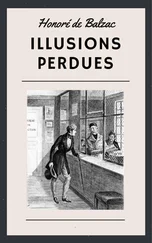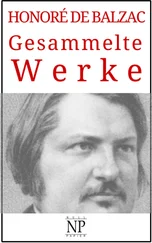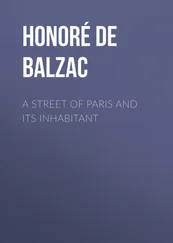Honoré Balzac - A Start in Life
Здесь есть возможность читать онлайн «Honoré Balzac - A Start in Life» — ознакомительный отрывок электронной книги совершенно бесплатно, а после прочтения отрывка купить полную версию. В некоторых случаях можно слушать аудио, скачать через торрент в формате fb2 и присутствует краткое содержание. Жанр: literature_19, foreign_antique, foreign_prose, на английском языке. Описание произведения, (предисловие) а так же отзывы посетителей доступны на портале библиотеки ЛибКат.
- Название:A Start in Life
- Автор:
- Жанр:
- Год:неизвестен
- ISBN:нет данных
- Рейтинг книги:4 / 5. Голосов: 1
-
Избранное:Добавить в избранное
- Отзывы:
-
Ваша оценка:
- 80
- 1
- 2
- 3
- 4
- 5
A Start in Life: краткое содержание, описание и аннотация
Предлагаем к чтению аннотацию, описание, краткое содержание или предисловие (зависит от того, что написал сам автор книги «A Start in Life»). Если вы не нашли необходимую информацию о книге — напишите в комментариях, мы постараемся отыскать её.
A Start in Life — читать онлайн ознакомительный отрывок
Ниже представлен текст книги, разбитый по страницам. Система сохранения места последней прочитанной страницы, позволяет с удобством читать онлайн бесплатно книгу «A Start in Life», без необходимости каждый раз заново искать на чём Вы остановились. Поставьте закладку, и сможете в любой момент перейти на страницу, на которой закончили чтение.
Интервал:
Закладка:
Honoré de Balzac
A Start in Life
CHAPTER I. THAT WHICH WAS LACKING TO PIERROTIN’S HAPPINESS
Railroads, in a future not far distant, must force certain industries to disappear forever, and modify several others, more especially those relating to the different modes of transportation in use around Paris. Therefore the persons and things which are the elements of this Scene will soon give to it the character of an archaeological work. Our nephews ought to be enchanted to learn the social material of an epoch which they will call the “olden time.” The picturesque “coucous” which stood on the Place de la Concorde, encumbering the Cours-la-Reine, – coucous which had flourished for a century, and were still numerous in 1830, scarcely exist in 1842, unless on the occasion of some attractive suburban solemnity, like that of the Grandes Eaux of Versailles. In 1820, the various celebrated places called the “Environs of Paris” did not all possess a regular stage-coach service.
Nevertheless, the Touchards, father and son, had acquired a monopoly of travel and transportation to all the populous towns within a radius of forty-five miles; and their enterprise constituted a fine establishment in the rue du Faubourg-Saint-Denis. In spite of their long-standing rights, in spite, too, of their efforts, their capital, and all the advantages of a powerful centralization, the Touchard coaches (“messageries”) found terrible competition in the coucous for all points with a circumference of fifteen or twenty miles. The passion of the Parisian for the country is such that local enterprise could successfully compete with the Lesser Stage company, – Petites Messageries, the name given to the Touchard enterprise to distinguish it from that of the Grandes Messageries of the rue Montmartre. At the time of which we write, the Touchard success was stimulating speculators. For every small locality in the neighborhood of Paris there sprang up schemes of beautiful, rapid, and commodious vehicles, departing and arriving in Paris at fixed hours, which produced, naturally, a fierce competition. Beaten on the long distances of twelve to eighteen miles, the coucou came down to shorter trips, and so lived on for several years. At last, however, it succumbed to omnibuses, which demonstrated the possibility of carrying eighteen persons in a vehicle drawn by two horses. To-day the coucous – if by chance any of those birds of ponderous flight still linger in the second-hand carriage-shops – might be made, as to its structure and arrangement, the subject of learned researches comparable to those of Cuvier on the animals discovered in the chalk pits of Montmartre.
These petty enterprises, which had struggled since 1822 against the Touchards, usually found a strong foothold in the good-will and sympathy of the inhabitants of the districts which they served. The person undertaking the business as proprietor and conductor was nearly always an inn-keeper along the route, to whom the beings, things, and interests with which he had to do were all familiar. He could execute commissions intelligently; he never asked as much for his little stages, and therefore obtained more custom than the Touchard coaches. He managed to elude the necessity of a custom-house permit. If need were, he was willing to infringe the law as to the number of passengers he might carry. In short, he possessed the affection of the masses; and thus it happened that whenever a rival came upon the same route, if his days for running were not the same as those of the coucou, travellers would put off their journey to make it with their long-tried coachman, although his vehicle and his horses might be in a far from reassuring condition.
One of the lines which the Touchards, father and son, endeavored to monopolize, and the one most stoutly disputed (as indeed it still is), is that of Paris to Beaumont-sur-Oise, – a line extremely profitable, for three rival enterprises worked it in 1822. In vain the Touchards lowered their price; in vain they constructed better coaches and started oftener. Competition still continued, so productive is a line on which are little towns like Saint-Denis and Saint-Brice, and villages like Pierrefitte, Groslay, Ecouen, Poncelles, Moisselles, Monsoult, Maffliers, Franconville, Presles, Nointel, Nerville, etc. The Touchard coaches finally extended their route to Chambly; but competition followed. To-day the Toulouse, a rival enterprise, goes as far as Beauvais.
Along this route, which is that toward England, there lies a road which turns off at a place well-named, in view of its topography, The Cave, and leads through a most delightful valley in the basin of the Oise to the little town of Isle-Adam, doubly celebrated as the cradle of the family, now extinct, of Isle-Adam, and also as the former residence of the Bourbon-Contis. Isle-Adam is a little town flanked by two large villages, Nogent and Parmain, both remarkable for splendid quarries, which have furnished material for many of the finest buildings in modern Paris and in foreign lands, – for the base and capital of the columns of the Brussels theatre are of Nogent stone. Though remarkable for its beautiful sites, for the famous chateaux which princes, monks, and designers have built, such as Cassan, Stors, Le Val, Nointel, Persan, etc., this region had escaped competition in 1822, and was reached by two coaches only, working more or less in harmony.
This exception to the rule of rivalry was founded on reasons that are easy to understand. From the Cave, the point on the route to England where a paved road (due to the luxury of the Princes of Conti) turned off to Isle-Adam, the distance is six miles. No speculating enterprise would make such a detour, for Isle-Adam was the terminus of the road, which did not go beyond it. Of late years, another road has been made between the valley of Montmorency and the valley of the Oise; but in 1822 the only road which led to Isle-Adam was the paved highway of the Princes of Conti. Pierrotin and his colleague reigned, therefore, from Paris to Isle-Adam, beloved by every one along the way. Pierrotin’s vehicle, together with that of his comrade, and Pierrotin himself, were so well known that even the inhabitants on the main road as far as the Cave were in the habit of using them; for there was always better chance of a seat to be had than in the Beaumont coaches, which were almost always full. Pierrotin and his competitor were on the best of terms. When the former started from Isle-Adam, the latter was returning from Paris, and vice versa.
It is unnecessary to speak of the rival. Pierrotin possessed the sympathies of his region; besides, he is the only one of the two who appears in this veracious narrative. Let it suffice you to know that the two coach proprietors lived under a good understanding, rivalled each other loyally, and obtained customers by honorable proceedings. In Paris they used, for economy’s sake, the same yard, hotel, and stable, the same coach-house, office, and clerk. This detail is alone sufficient to show that Pierrotin and his competitor were, as the popular saying is, “good dough.” The hotel at which they put up in Paris, at the corner of the rue d’Enghien, is still there, and is called the “Lion d’Argent.” The proprietor of the establishment, which from time immemorial had lodged coachmen and coaches, drove himself for the great company of Daumartin, which was so firmly established that its neighbors, the Touchards, whose place of business was directly opposite, never dreamed of starting a rival coach on the Daumartin line.
Though the departures for Isle-Adam professed to take place at a fixed hour, Pierrotin and his co-rival practised an indulgence in that respect which won for them the grateful affection of the country-people, and also violent remonstrances on the part of strangers accustomed to the regularity of the great lines of public conveyances.
Читать дальшеИнтервал:
Закладка:
Похожие книги на «A Start in Life»
Представляем Вашему вниманию похожие книги на «A Start in Life» списком для выбора. Мы отобрали схожую по названию и смыслу литературу в надежде предоставить читателям больше вариантов отыскать новые, интересные, ещё непрочитанные произведения.
Обсуждение, отзывы о книге «A Start in Life» и просто собственные мнения читателей. Оставьте ваши комментарии, напишите, что Вы думаете о произведении, его смысле или главных героях. Укажите что конкретно понравилось, а что нет, и почему Вы так считаете.












